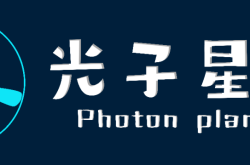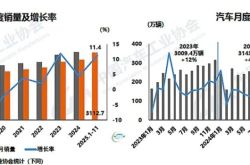Time-resolved ARPES with Tunable Mid-infrared Pump and Far-ultraviolet Probe
![]() 03/17 2025
03/17 2025
![]() 843
843
Angle-resolved photoemission spectroscopy (ARPES), grounded in the photoelectric effect, directly extracts momentum and energy data of electrons, thus revealing the electronic structure of materials. By leveraging ultrafast lasers, ARPES extends into the time domain, known as time-resolved ARPES (TR-ARPES). This technique employs a pump-probe setup to investigate ultrafast electron dynamics, scattering processes, light-induced phase transitions, and non-equilibrium electronic states.
This paper introduces a laser system tailored for TR-ARPES measurements. The pump pulse, generated via a three-stage optical parametric amplifier (OPA) and difference frequency generation (DFG) process, is tunable from 1.5 to 8 μm (corresponding to photon energies of 0.82 to 0.15 eV) at a repetition rate of 250 kHz. The probe pulse, the fifth harmonic with a photon energy of 6 eV, corresponds to a wavelength of 206 nm [1].
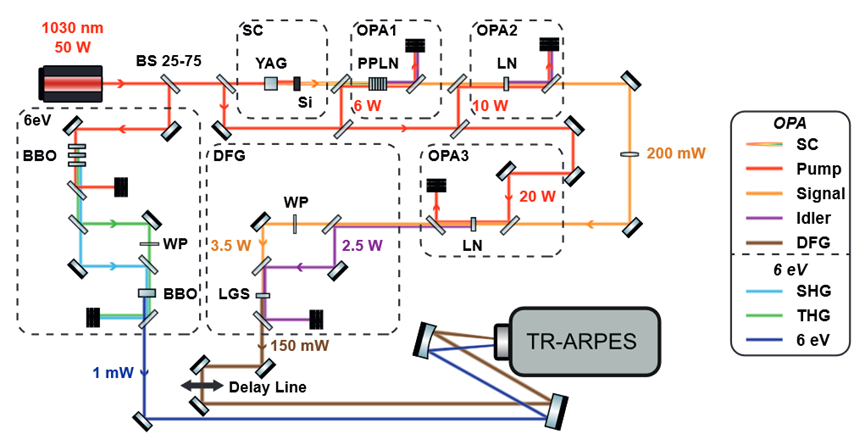
Figure 1: Experimental setup [1]
As depicted in Figure 1, the system's optical path begins with a ytterbium-doped fiber laser, delivering single pulses of 200 μJ, a pulse width of 150 fs, and an average power of 50 W at a 250 kHz repetition rate. The laser output is split 75/25 by a beam splitter (BS). The higher-energy path generates the pump pulse through a three-stage OPA and DFG process, while the lower-energy path produces the probe pulse.
In the pump pulse path, 1 W of power is focused onto a 10 mm YAG crystal, generating a supercontinuum spectrum spanning 500-2000 nm. The utilized band is 1600-1850 nm, stretched using a 3 mm silicon plate. The OPA stages operate at 6 W, 10 W, and 20 W, respectively. The first stage employs a 1 mm MgO-doped PPLN crystal for quasi-phase matching, yielding signal and idler light with powers of approximately 25 mW. The second and third stages use 1.5 mm LN crystals, producing signal and idler light with powers of around 600-900 mW and 5-6 W, respectively. These lights are spatially separated, with powers of 3.5 W and 2.5 W. Adjusting the signal light's polarization with a half-wave plate, DFG is induced using a 1 mm LaGaSiO (LGS) crystal, producing DFG light with wavelengths ranging from 4 to 8 μm and powers exceeding 70 mW, serving as the TR-ARPES pump pulse. Figure 2(a) illustrates three signal-idler pairs with distinct wavelengths: 1640/2770 nm (blue), 1770/2460 nm (orange), and 1830/2350 nm (green), corresponding to DFG light at 4 μm (blue), 6.4 μm (orange), and 8.2 μm (green) in Figure 2(b).
In the probe pulse path, a portion of the 12 W power is frequency-doubled using a BBO crystal. Calcite compensates for the time delay between the fundamental and frequency-doubled light. Another BBO crystal sums the fundamental (1030 nm) and frequency-doubled (515 nm) light to produce tripled light (343 nm). The third BBO crystal sums these to obtain the fifth harmonic (206 nm) with a photon energy of approximately 6 eV. All BBO crystals are 1 mm thick.
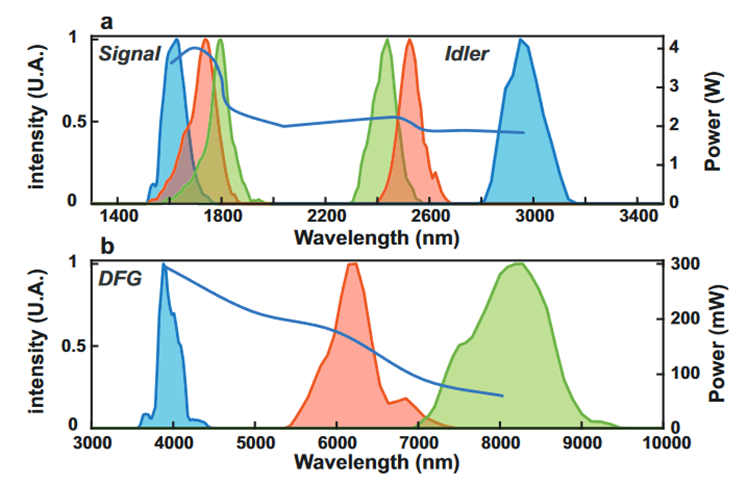
Figure 2: (a) Signal and idler light with three wavelength pairs (blue, orange, green) (b) Tunability of DFG light with three wavelengths in the 4-8 μm range. The blue curve represents the average power [1]
Figure 3 demonstrates long-term power stability. Figure 3(a) shows the power curves of the signal (1640 nm) and idler (2770 nm) light over 25 hours, with average powers of 4.1 W and 1.58 W, respectively, and RMS values of 1%. The far-field spot diameters are 120 and 90 μm, respectively. Figure 3(b) presents the power curves of the 4 μm and 8 μm DFG light over 15 hours, with average powers of 300 mW and 74 mW, respectively, and RMS values of 3%. The inset displays the 8 μm far-field spot shape, approximately 200-300 μm in diameter.
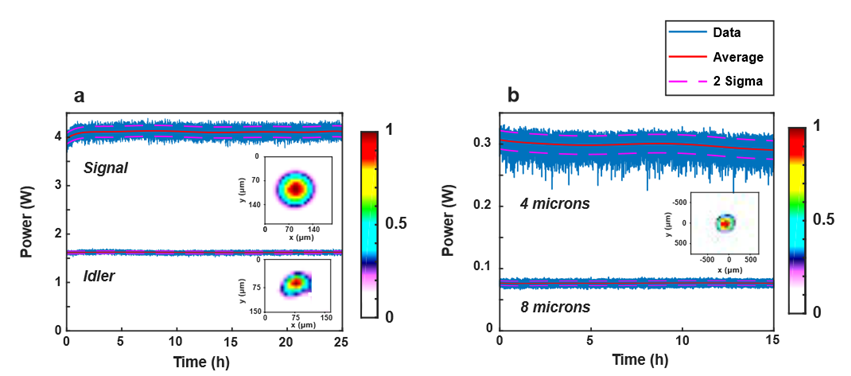
Figure 3: (a) Long-term power stability of the signal (1640 nm) and idler (2770 nm) light generating 4 μm DFG light. The inset shows the far-field beam profile on the LGS crystal. (b) Long-term power stability of 4 μm and 8 μm DFG light. The inset displays the 8 μm DFG light's far-field beam profile [1]
Using frequency-resolved optical gating, the author measured spectral and temporal characteristics. The signal light has a pulse width of 62 fs (transform limit: 51 fs); the idler light, 110 fs (transform limit: 80 fs); and the DFG light, 135 fs (transform limit: 104 fs), corresponding to approximately 10 optical cycles. Applying this system to TR-ARPES measurements on the topological insulator bismuth telluride (BiTe), Figure 4(a) shows the ARPES spectrum at zero pump-probe delay. The pump pulse, with a photon energy of 300 meV, a wavelength of 4 μm, and an energy density of 70 μJ/cm², yields a time resolution of 202 fs ± 12 fs, as determined by fitting the electron emission intensity curve within the purple region in Figure 4(a) (Figure 4(b)). Combined with the 135 fs pump pulse width, the probe pulse width is approximately 150 fs.
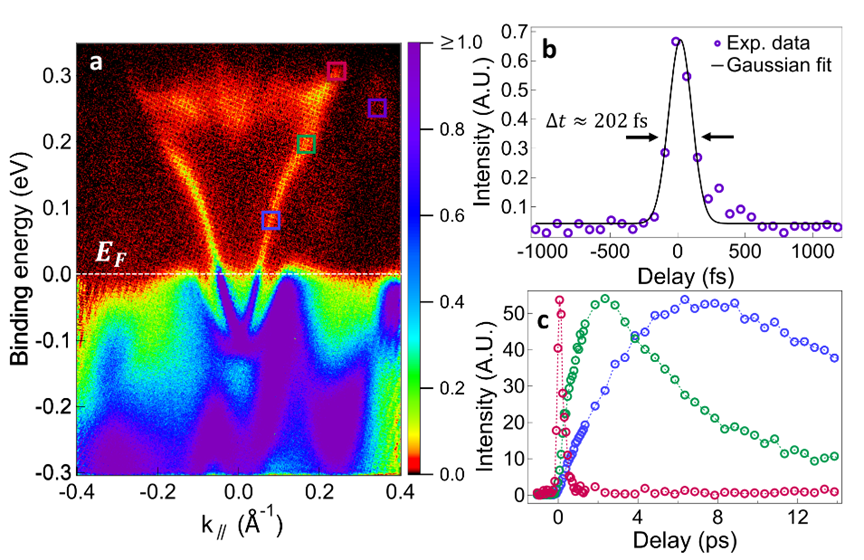
Figure 4: (a) ARPES spectrum of BiTe at zero time delay (b) Fitting curve of intensity within the purple box in Figure 4(a) versus time delay (c) Intensity curves within the red, green, and blue boxes in Figure 4(a) [1]
In summary, this paper introduces a laser system for TR-ARPES measurements, featuring a tunable broadband pump (1.5-8 μm, 0.82-0.15 eV, 250 kHz) and a 6 eV UV probe pulse. This system enables the study of light-induced phenomena in quantum materials, enhancing our understanding of electronic behavior in complex systems.
References:
[1] ADRIEN LONGA, JEAN-MICHEL PARENT, BENSON KWAKU FRIMPONG, et al. Time-resolved ARPES with probe energy of 6.0 eV and tunable MIR pump at 250 kHz[J]. Optics Express, 2024, 32(17):29549-29557.



